How Analytics in eCommerce Can Help Optimize for Conversions & Sales
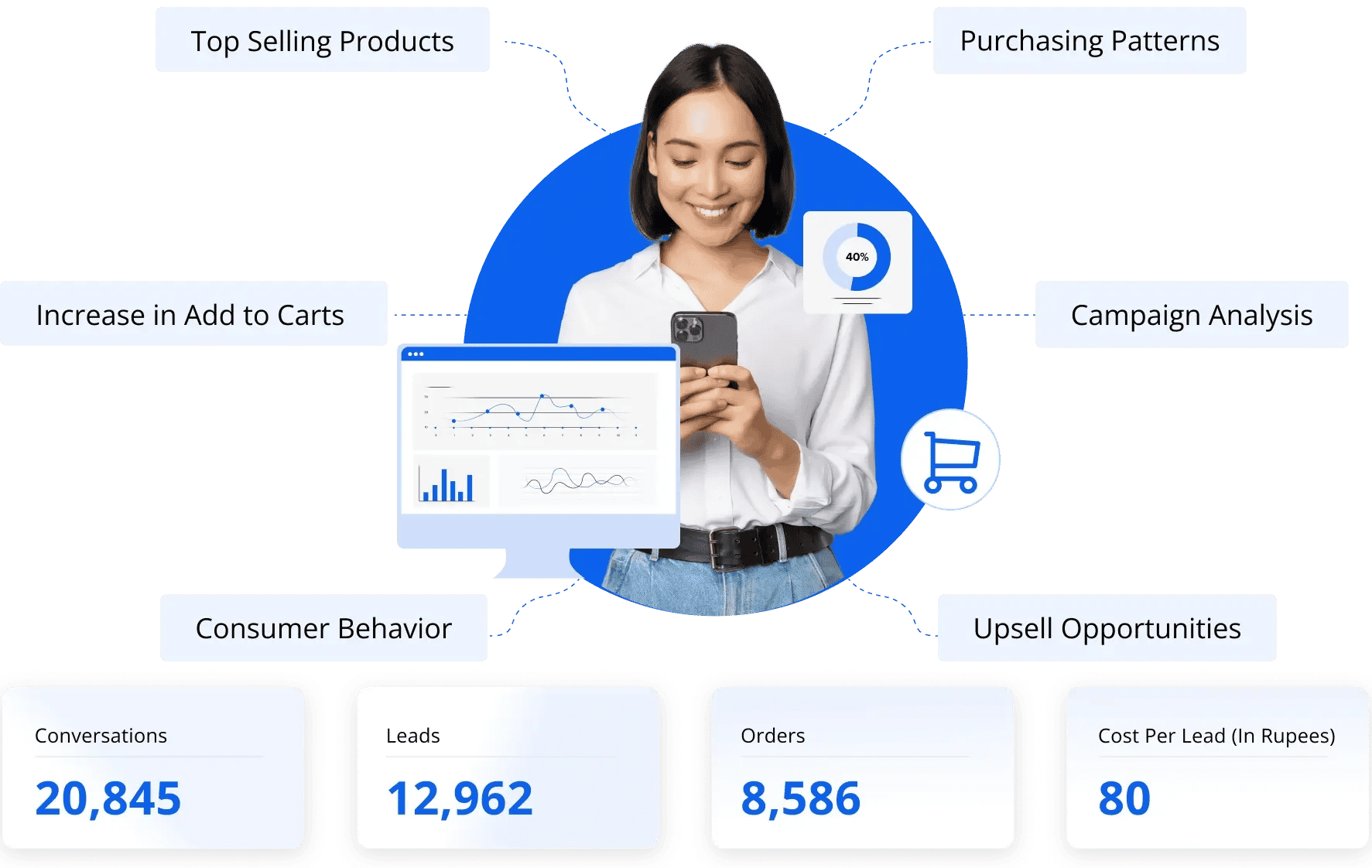
If you are an eCommerce marketer, metrics like number of orders, average order value, Customer Acquisition Cost (CAC), might be keeping you up at night! Don’t worry, you can certainly make your job easier with eCommerce analytics.

What is eCommerce Analytics?
It is the collection, analysis and interpretation of data from all the different sources that impact online retail or eCommerce activities. Analytics in eCommerce help retailers make informed, data-driven business decisions. They comprise the metrics pertaining to the entire gamut of customer journey, including acquisition, conversion, and retention.
Analytics help retailers glean customer insights from their shopping journeys, such as engagement, add-to-carts, cart abandonment, completed checkouts, product returns, and so much more.
Why Analytics Is the Need of the Hour for eCommerce Brands
eCommerce brands can use analytics to derive tangible benefits and achieve their key business objectives. Let’s look at five benefits of eCommerce analytics.
Evaluate Trends & Gain Foresight: Analytics help observe trends in buying behavior, purchasing patterns, and more. They also help gain foresight into customer expectations, on-demand products and seasonal deviations, which can aid in strategic planning and product roadmapping for sustained business growth.
Read More: The Ultimate Guide to WhatsApp Marketing
Product Recommendations: Retailers can offer data-backed product recommendations to customers based on their preferences, purchase history, and browsing behavior. Relevant, contextual product suggestions help improve add-to-carts, conversions, and average order value (AOV).
Personalization: Analytics can be used to segment customers and offer tailored experiences across touchpoints in a purchasing journey. Personalization driven by data helps reduce friction in the buying process, increasing the rate of conversions and sales, and triggering customer loyalty and advocacy.
Measure Marketing & Sales Campaigns: Analytics help marketers and decision-makers remove guesswork when drawing inferences on why their campaigns drove (or didn’t) the desired outcomes. This means, being able to track impressions, clickthrough rates (CTR), and more such engagement metrics. Also, KPIs such as customer acquisition cost, customer lifetime value and return on ad spend can all be tracked with the help of eCommerce analytics.
Also Read: 5 Ways to Level Up Your WhatsApp Game with ChatGPT
Know Your Customers Better: In the fast-moving world of eCommerce where orders and transactions mean everything, the importance of customer experience cannot be overlooked. Analytics help understand the level of customer satisfaction, the number of repeat purchases, referral buys, and more such indicators of eCommerce success.
Best Practices of Using Analytics in eCommerce
Here’s a lowdown of the best practices of using eCommerce analytics to maximize its potential and generate tangible results.
-
The Right Way to Interpret Data: It’s easy to look at data in isolation and get the impression that it doesn’t quite paint the full picture. This happens because eCommerce brands might collect data as they feel they need to. The right way is to correlate data with the KPIs and metrics that are important to each brand, such as conversion rate, customer lifetime value, average order value, and so on.
-
Funnel Analysis: eCommerce analytics help brands to gather insights that can guide optimization for better engagement, conversions and revenue. Analysis of the conversion funnel helps with user behavior tracking at each stage of the buying journey to identify any bottlenecks that might be contributing to drop-offs, cart abandonment, and more.
-
Segmentation & Cohort Analysis: Segmenting customers and analyzing each segment over a time period can help eCommerce brands to understand customer preferences, buying patterns, trends, and more. Cohort analysis helps gain insights on customer behavior and the performance of different customer segments during a specific time period.
-
Interact Directly with Customers: Despite all the data sources available and the analytics tools that help glean insights, eCommerce brands must prioritize direct interactions with customers to understand their pain points, products of interest, buying preferences, and so on. It’s important to engage with customers at different touchpoints and use voice of customer surveys, live chat and more to truly become a customer-centric brand that customers want to engage with and repeatedly purchase from.
-
Metrics to Track: In addition to CAC, CLV, and ROAS, eCommerce brands must track returning visitors, repeat buyers, product returns and refunds, and more to maximize the mileage in terms of customer engagement, revenue and retention. These are also key metrics that help with building and nurturing customer relationships.
How Haptik’s Analytics Platform Can Help
Haptik believes that every brand is unique, has unique business needs, and a one-size-fits-all approach doesn’t work for all. Success, therefore, needs to be measured as per a brand’s unique requirements and KPIs.
Haptik helps get the relevant metrics and actionable insights from real-world conversations with users. It collects first-hand customer feedback from their interactions with chatbots to help eCommerce brands identify trends and patterns, and gather foresight.
Custom Dashboards 
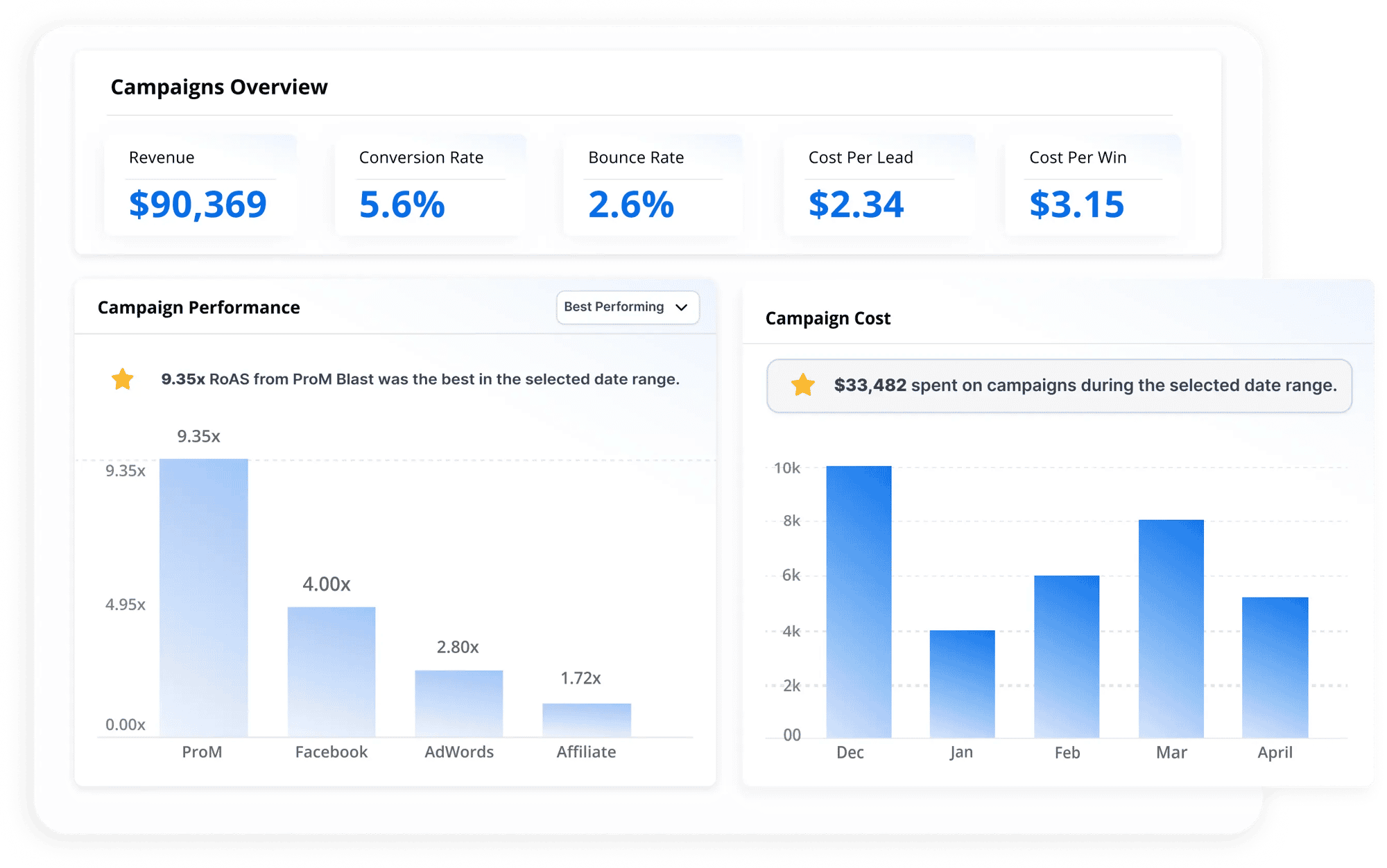
Business Overview 
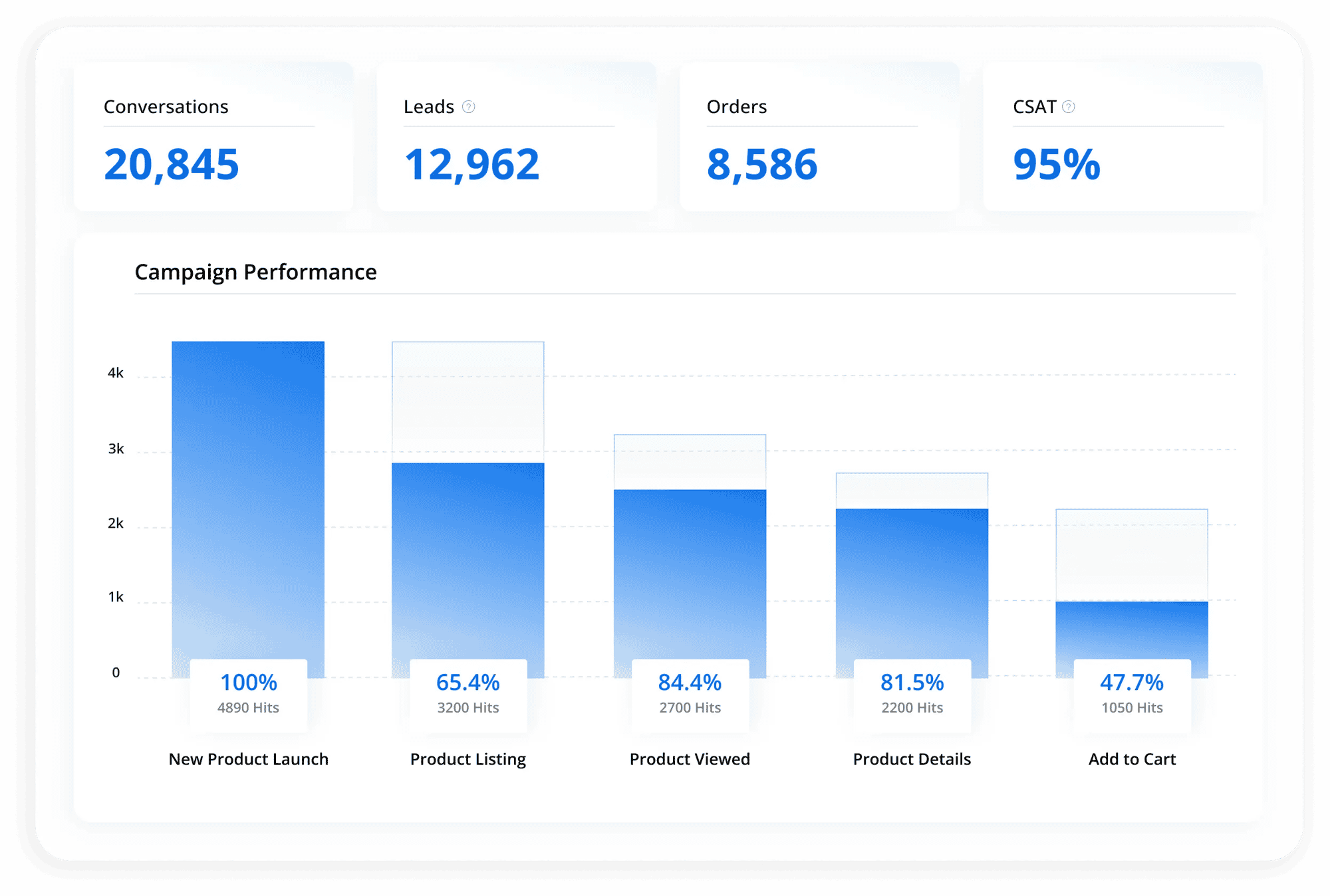
Campaign Analysis 
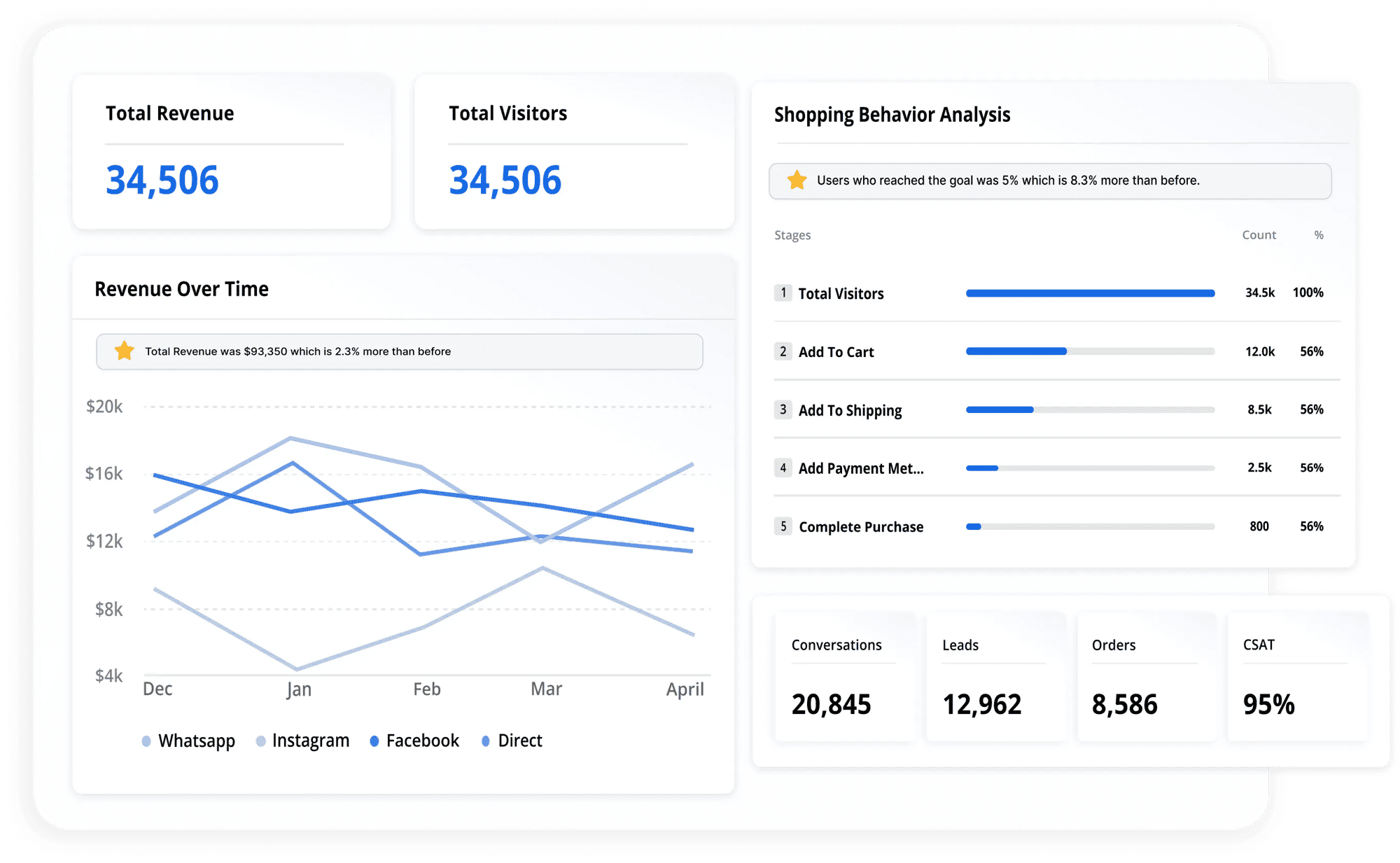
Track Customer Journey 
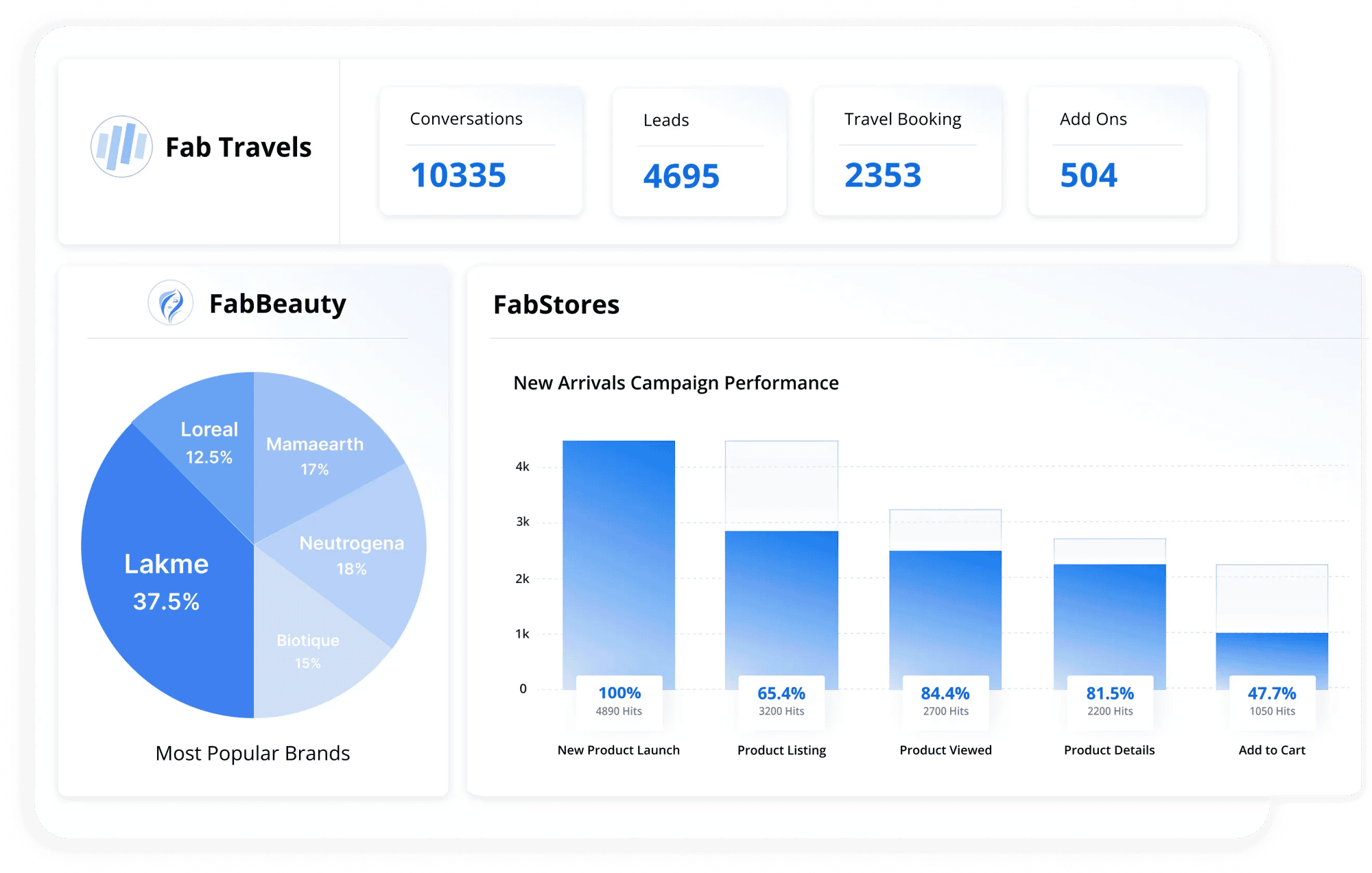




Conclusion
Analytics in eCommerce help brands measure their marketing and business performance in terms of lead generation, customer acquisition, total revenue generated, churn rate, retention rate, repeat purchase rate, cost per acquisition, customer lifetime value, and so on. Tracking these metrics not only indicate what’s working and what isn’t, but they also help optimize product offerings and customer journeys for seamless customer acquisition, higher revenue and better retention rates. Haptik’s proprietary analytics platform, Agile Analytics, are built to help eCommerce brands track metrics that matter, specific to the industry they operate in, and use the insights to maximize the full potential of their campaigns.

